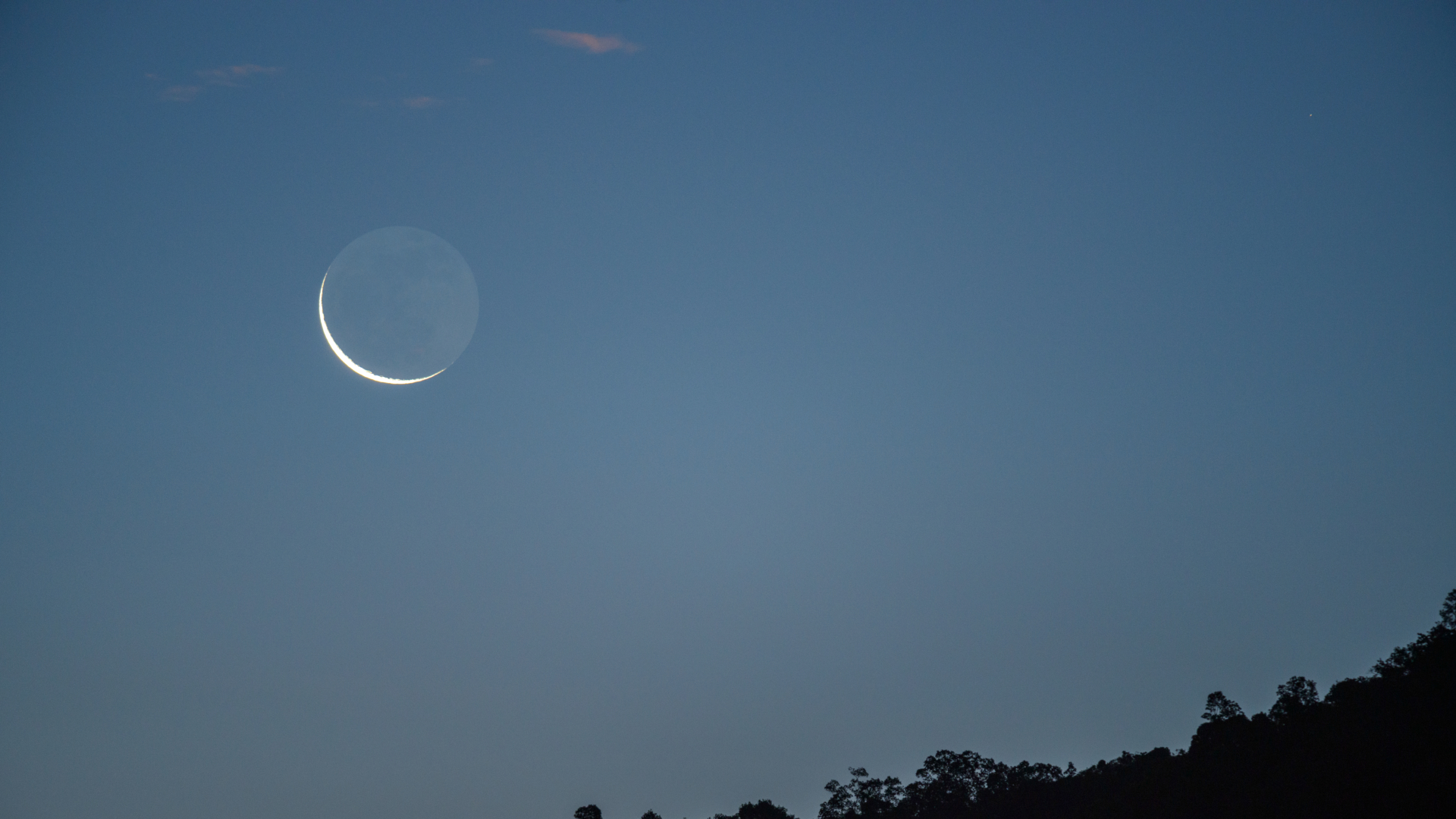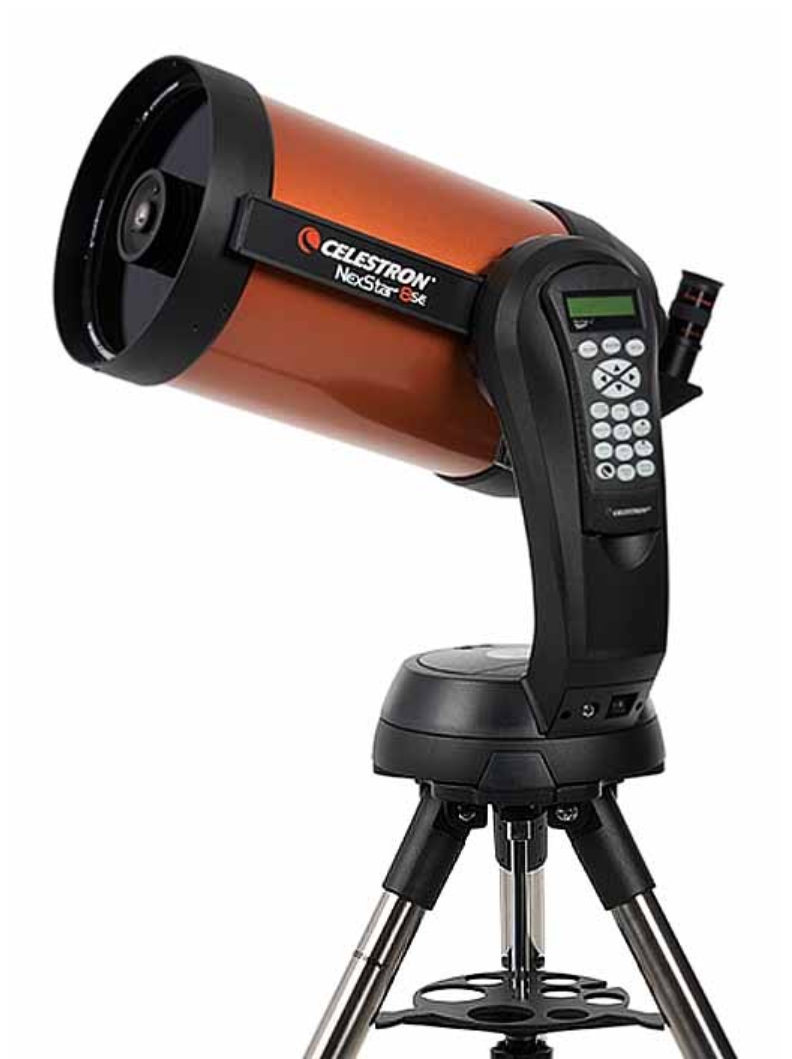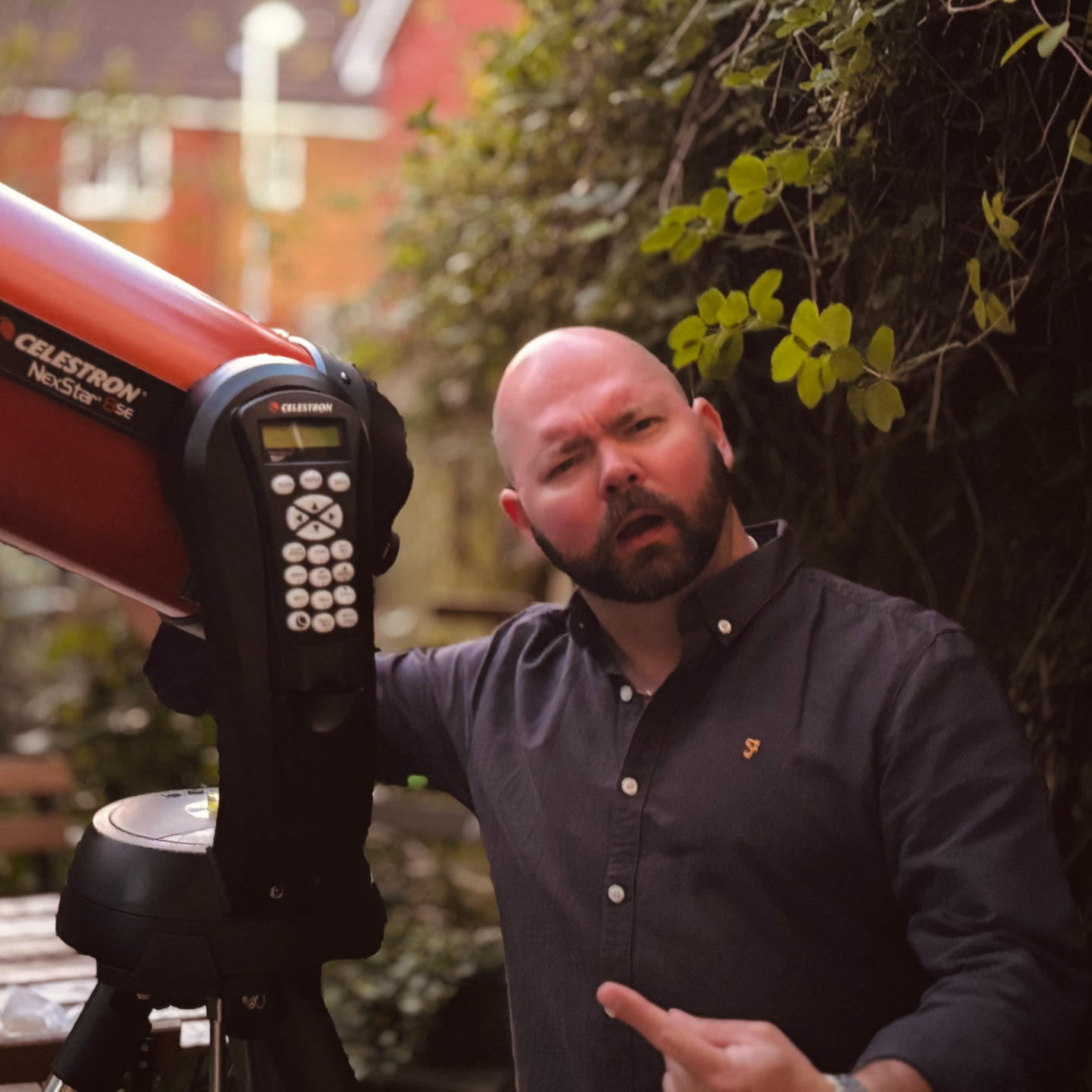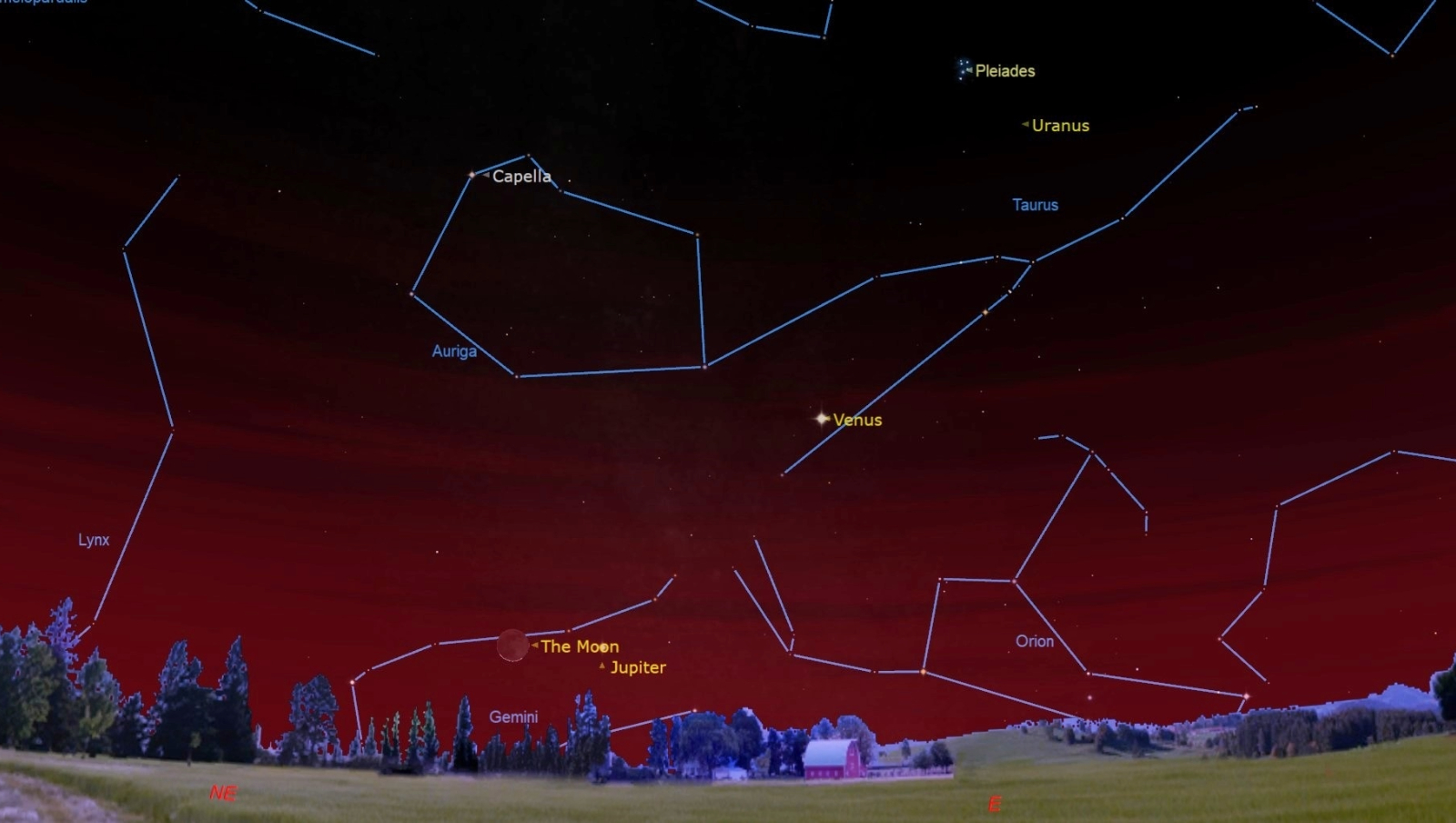Don't miss the crescent moon cozy up to Jupiter early on July 23
The thin crescent moon and Jupiter will be visible to the naked eye for early risers on July 23.

The crescent moon will shine close to the gas giant Jupiter in the morning sky on July 23, with its shadow-veiled disk softly lit by sunlight reflected off Earth's surface, a ghostly effect known as Earthshine
Look east around 4 a.m. local time, just before dawn, to see the slender form of the crescent moon climb above the horizon. Jupiter, appearing as a bright "star" will sit about 5 degrees to the right of the moon — roughly the combined width of your index, middle and ring fingers held at arms length against the night sky!
Venus will shine to the upper right of Jupiter in the pre-dawn sky, forming a fleeting cosmic triangle with the red supergiant star Betelgeuse, which will appear low on the eastern horizon before vanishing in the light of the rising sun.
A telescope with an aperture of 6 inches or more will allow viewers to observe Jupiter's four brightest moons, Io, Europa, Ganymede and Callisto, as well as the planet's gargantuan banded cloud layers. However, care must be taken to never point a telescope or binoculars in the direction of the rising sun, as doing so could result in a permanent loss of vision.

Want to see the moon with Jupiter? The Celestron NexStar 8SE is ideal for beginners wanting quality, reliable and quick views of celestial objects. For a more in-depth look at our Celestron NexStar 8SE review.
On the nights surrounding the new moon on July 24, you might notice a soft light suffusing the lunar disk This phenomenon, often referred to as Earthshine or the 'Da Vinci Glow', occurs when sunlight bounces off Earth and illuminates the moon's nightside and is often visible when the moon is a thin crescent.
This gentle glow reveals the vast basaltic plains of the lunar seas darkening swathes of the lunar surface. The formations were created billions of years ago when ancient lava flows flooded a network of gigantic impact basins left behind by cataclysmic asteroid strikes, which later hardened to renew the lunar surface.
The dark nights on either side of the new moon phase present a perfect opportunity to spot the diffuse light cast by the Pleiades open star cluster — a gravitationally bound collection of over 1,000 stellar bodies that orbits within the Milky Way some 410 light-years from Earth. The Pleiades will be visible as a hazy smudge of light from a dark sky location to the upper right of Venus on the night of July 23. A pair of 10x50 binoculars will allow viewers to pick out the most prominent of the blue-white stars, while a small telescope will help resolve a far greater number.
Breaking space news, the latest updates on rocket launches, skywatching events and more!
Stargazers hoping to explore the wonders of the night sky should read our guide to the top telescopes and binoculars available in 2025. Those new to the hobby should also check out our roundup of the best smartphone astronomy apps, which use augmented reality technology to pinpoint the locations of the stars, constellations, planets and deep sky objects that populate the night sky.
Editor's Note: If you would like to share your astrophotography with Space.com's readers, then please send your photo(s), comments, and your name and location to spacephotos@space.com.

Anthony Wood joined Space.com in April 2025 after contributing articles to outlets including IGN, New Atlas and Gizmodo. He has a passion for the night sky, science, Hideo Kojima, and human space exploration, and can’t wait for the day when astronauts once again set foot on the moon.
You must confirm your public display name before commenting
Please logout and then login again, you will then be prompted to enter your display name.

